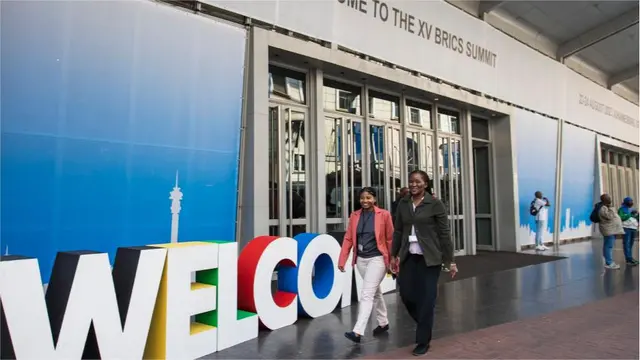The world has been closely monitoring the BRICS summit, which brings African countries together to enhance their share of the global economy and bridge the substantial gap in global governance.
Over 40 countries, including Iran, Saudi Arabia, Argentina and Bangladesh, have expressed interest in BRICS membership. The increasing number of countries eager to join this group of emerging markets highlights its appeal and inclusivity.
Over time, the bloc's cooperation has expanded across various fronts, supported by the New Development Bank. Established in 2015, this bank serves as a resource hub for infrastructure and sustainable development projects.
Data from the bank reveals approval for nearly a hundred projects totaling $33.2 billion, contributing to member countries' economic and social progress while strengthening their green and sustainable image.
Concurrently, BRICS members advocate for collaboration in the new industrial revolution, deepening ties in digitalization, industrialization, and innovation. This effort aids in maintaining the flow of goods and services and stabilizing industrial and supply chains amidst Western protective technology measures. BRICS stands as an exemplary model for emerging markets and developing nations seeking strength through unity.
The expansion of BRICS membership is a prominent topic at this year's summit. Over 20 countries have formally applied to join so far. Algerian President Abdelmadjid Tebboune noted that BRICS membership would help his country avoid global polarization.
Increasing voice of developing countries
BRICS countries collectively represent a population of over 3.2 billion individuals, comprising around 40 percent of the world's total population of roughly 8 billion. Together, they constitute a quarter of the global GDP and account for 16 percent of world trade.
By involving African countries in this year's discussions, BRICS underscores the importance of multilateralism and shared development that encompasses the Global South. These emerging markets are becoming a vital driving force for worldwide growth and fostering more equitable international relationships.
"BRICS has tapped into a demand that wasn't being met elsewhere," said Rebecca Ray, a senior researcher at the Boston University Global Development Policy Center. Hopes are pinned on these "BRICS Plus" aspirants to infuse new perspectives into the group's expansion, catering to a large group of developing countries that feel undervalued or marginalized in a Western-dominated world.
The crux of the global woes is "economic concentration that leaves too many nations at the mercy of too few," Indian Foreign Minister Subrahmanyam Jaishankar said, urging the gathering to "send out a strong message that the world is multipolar, that it is rebalancing."
"One key issue for the BRICS to consider is global governance. There is a need to change the current system, which is unfair and asymmetric. In particular, the architecture of the financial system needs a major reform," Carlos Maria Correa, executive director of the South Center, told Xinhua.
Through years of development, BRICS has showcased a harmonious diversity model, demonstrating how countries with differing interests and cultures can form a united entity with shared aspirations for recovery, resilience, and broader representation.
BRICS countries don't just constitute an exclusive circle; they form a supportive and mutually beneficial cooperative family. Numerous Global South nations look to BRICS for representation and support in addressing global challenges like food crises, energy shortages, climate change, terrorism, geopolitical conflicts, hegemony, and protectionism.
(CGTN)
 简体中文
简体中文

